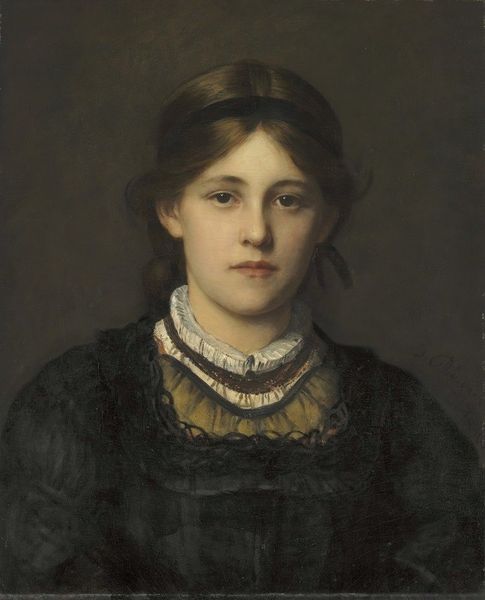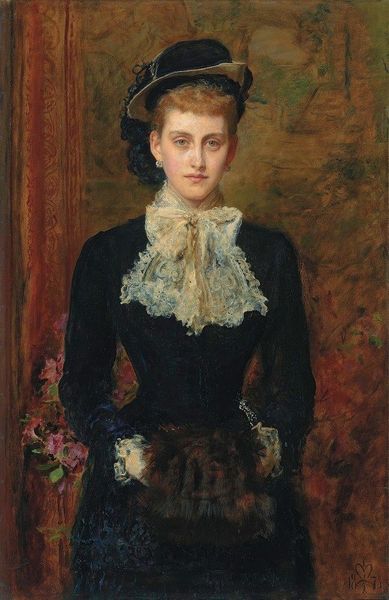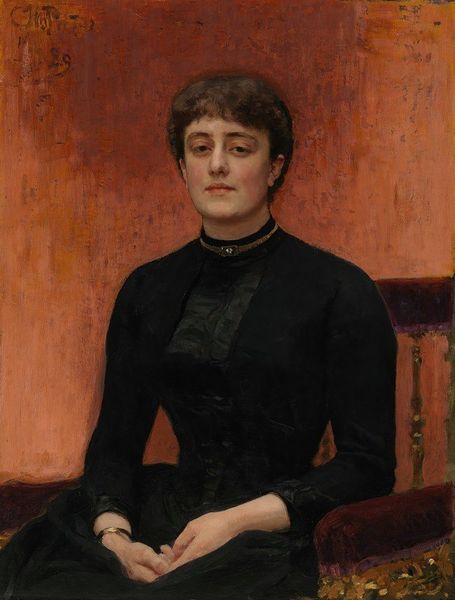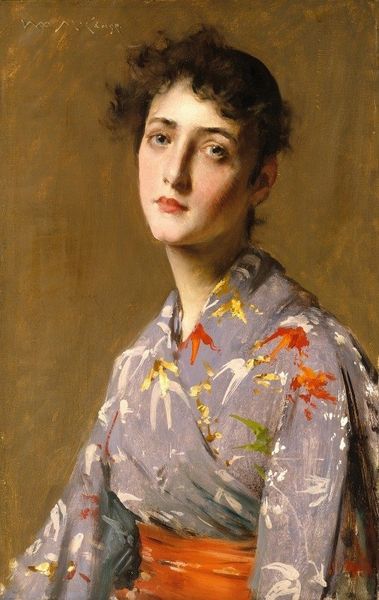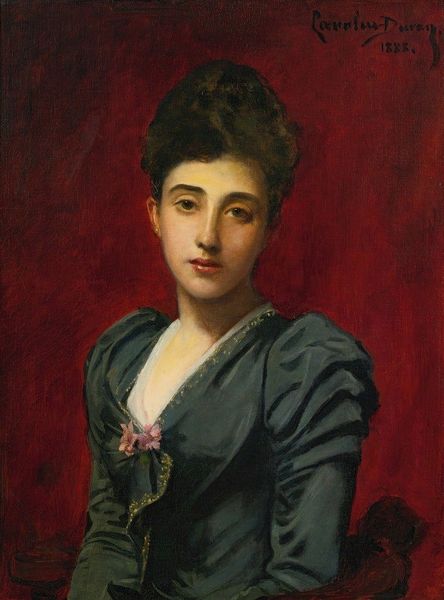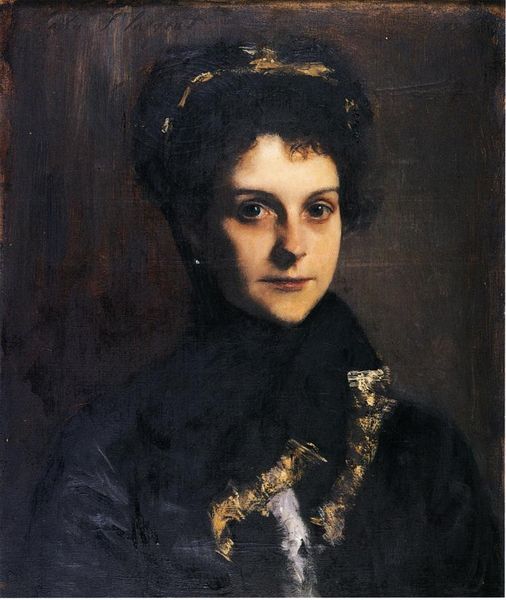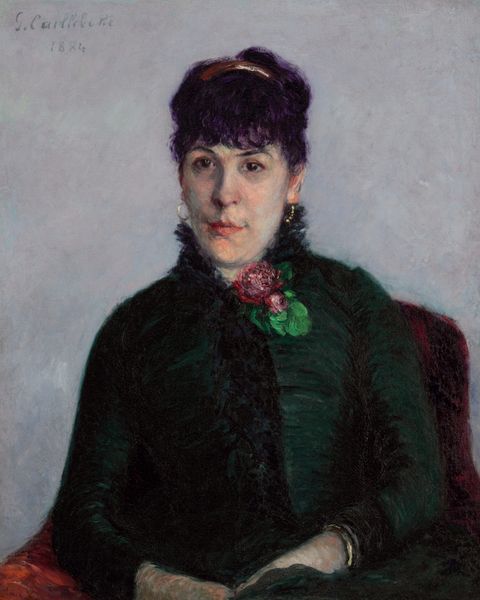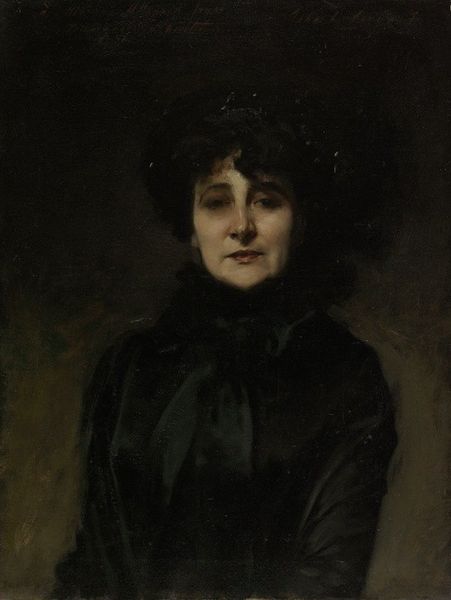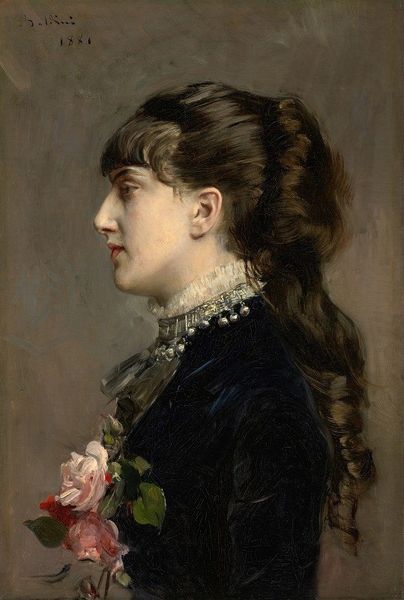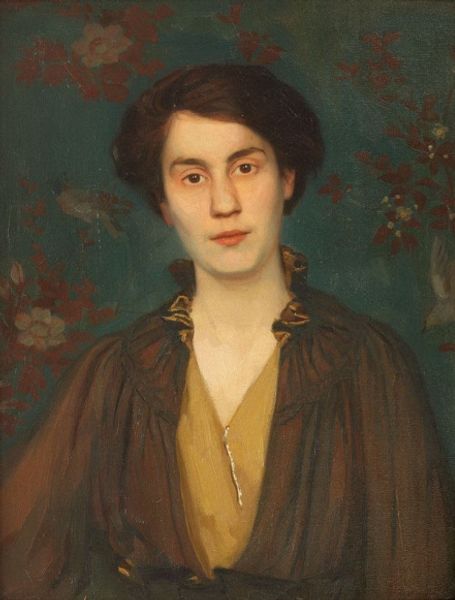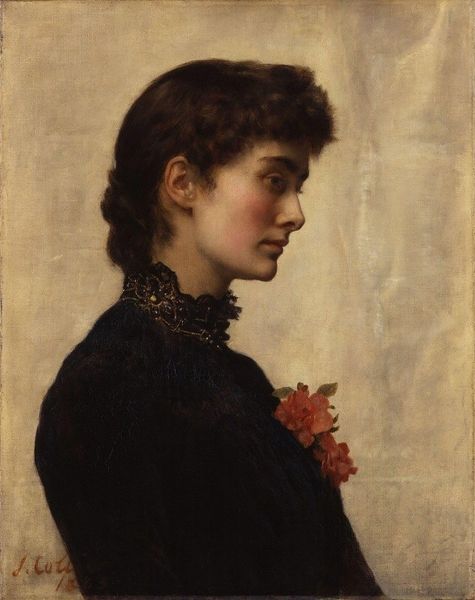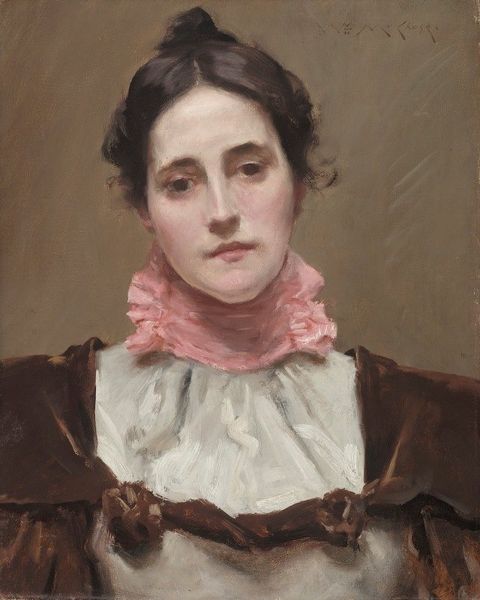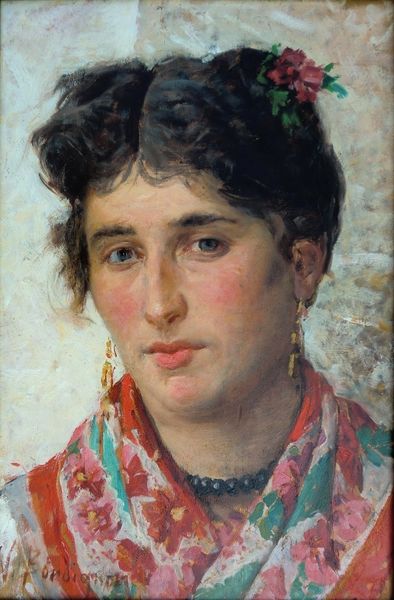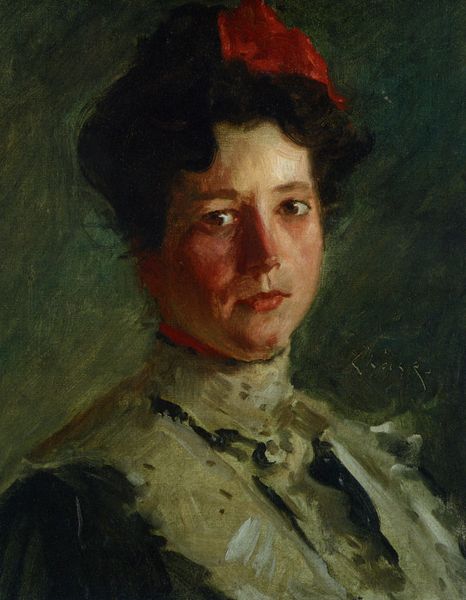
Copyright: Public Domain: Artvee
Curator: Here we have Władysław Czachórski’s "Portrait of Maria Godlewska née Popiel," a captivating oil painting created sometime between 1853 and 1900. Editor: My immediate reaction is that this is a striking juxtaposition of boldness and restraint. The vibrant red background is immediately attention-grabbing, but her expression, the dark clothing, even the placement of the flowers create a certain solemnity. Curator: It's true, the high chroma of the background field acts as a visual foil to the more muted tonalities found within the subject's dress and complexion. Consider too, the composition – a standard portrait bust – adheres to a rigid formula of academic art. The line of her shoulders creates an implied triangle echoed by the shape of the head and neck; and overall that repetition gives the whole piece a remarkable stability. Editor: I'm intrigued by those flowers nestled at her collar. While at first they seem simply decorative, consider that during the Victorian era, specific flowers held codified symbolic meaning. The type and color chosen here for Maria could give insight into aspects of her personality or convey a hidden message about her station and social standing within that society. Curator: An interesting perspective! I’m naturally inclined to examine the pure artistry of Czachórski's technique—the smooth brushwork blending seamlessly into itself to create a consistent surface texture. But even for someone like me, it is worth pondering how he uses that very mastery to project an ideal of feminine virtue and elegance within very strict social constraints. The subtle asymmetry of her face also complicates the portrait slightly—resisting the perfect symmetrical image that the formal arrangement tries to invoke. Editor: Indeed, that touch of asymmetry brings humanity to her character. In her quiet eyes, there’s a certain vulnerability but also a suggestion of resolve. I sense, looking at this work, a kind of narrative possibility—a hint of hidden depths beneath the surface of high-society portraiture. What stories do you think those flowers tell, by the way? Curator: Ah, the question of narrative… I still believe this image succeeds through the harmony of color relationships and rigorous compositional form. However, exploring cultural contexts clearly adds enriching layers for some viewers! Editor: Precisely. This portrait invites us to ponder beyond its structure and surface. I like how it merges the individual and archetypal dimensions that create an intersection of personal feeling and wider meaning in art history.
Comments
No comments
Be the first to comment and join the conversation on the ultimate creative platform.
